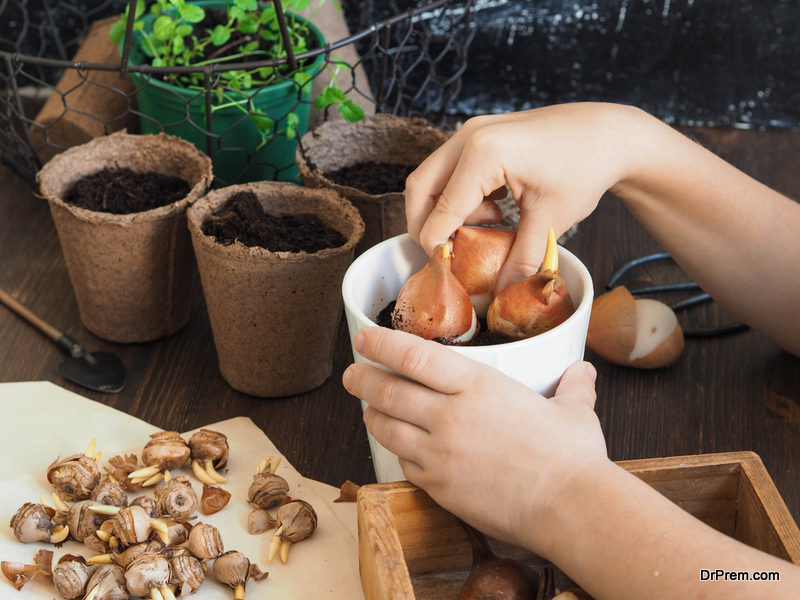We agree that hybrid tulips are magnificent in aesthetics, but they also have a long list of potential concerns. Most only stick around for three years before disappearing again, which is only possible under ideal conditions. Since squirrels, voles, and other gardening predators do not snag the bulbs long before they blossom, there is still the problem of covering their fading leaves and the barren places they leave afterward.
Tulips grown in pots, on the other hand, allow you to avoid these problems. They are a pleasure to see, can be taken anywhere, and are safe from the weather. Anyone who has tried growing tulips the other way earlier should give this easy method a go.
Below are two simple steps you need to follow when you finally get your hands on the tulip bulbs for sale:
1. Plant your tulip bulbs closely together
Placing a plastic pot upturned until the end of the pot can reduce the weight and make it simpler to move. Use low-cost, lightweight garden soil to fill the pots up to two-thirds of their capacity. Avoid using fertilizer at any cost.
Avoid using the standard spacing guidelines and plant the tulip bulbs in a dense circular layout. Bulbs should be planted in potting soil at the same level as you would do in the ground.
Tulips grown in pots are far less prone to being damaged by animals than ground-planted tulips. But a wire mesh, like a spherical peony frame, placed on the surface of the soil and topped with a small amount of potting mix would protect your plants even more.
2. Keep the pot in a warm, dry place during the winter

The potted tulips should be kept in a cool, dark place, such as a basement if you live in a cold area. This prevents the bulbs from experiencing the defrost cycle that destroys them when they are kept in pots. When you first set them up, give them a good soaking in water, and then don’t do it again until springtime.
At the beginning of spring, you should regularly check your pots. So, just slightly saturate the soil. Pull out the tulips from the bulbs and display them as their leaves begin to sprout from the soil. Like tulips grown in the ground, those grown in pots need regular watering to ensure blooming.
After the flowers have faded, you may carefully replant the tulip bulbs in a sunlit bed. Still, you must take the same precautions when putting them on the ground. The smartest thing to do is to just compost the old tulip bulbs and think seriously about a new color scheme for next year.
Continue Growing Tulips!
To some extent, you may tell when tulips will bloom if you are aware of which category they belong to. The tulip season can be extended as much as possible by simply designing a few pots full of tulips with varying bloom timings. Nevertheless, this is not an exact science, so don’t be concerned if your tulips bloom a week or two early or late.
Article Submitted By Community Writer




